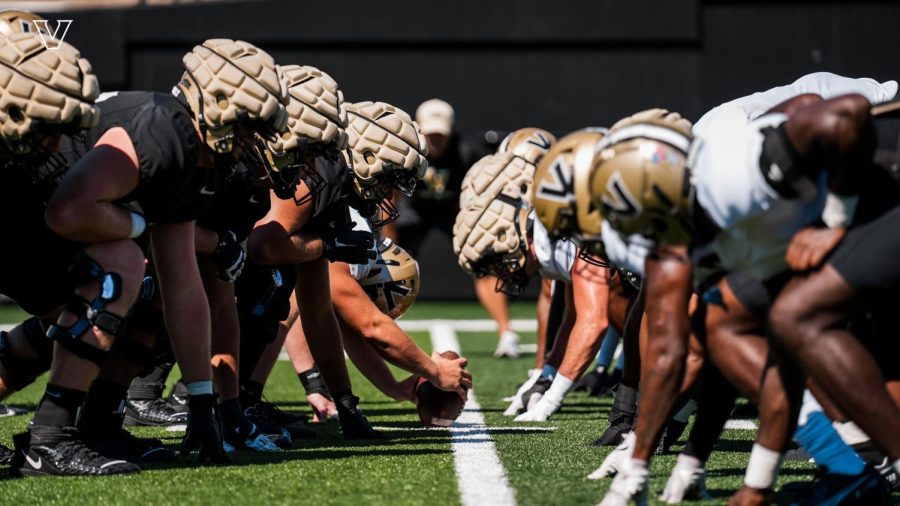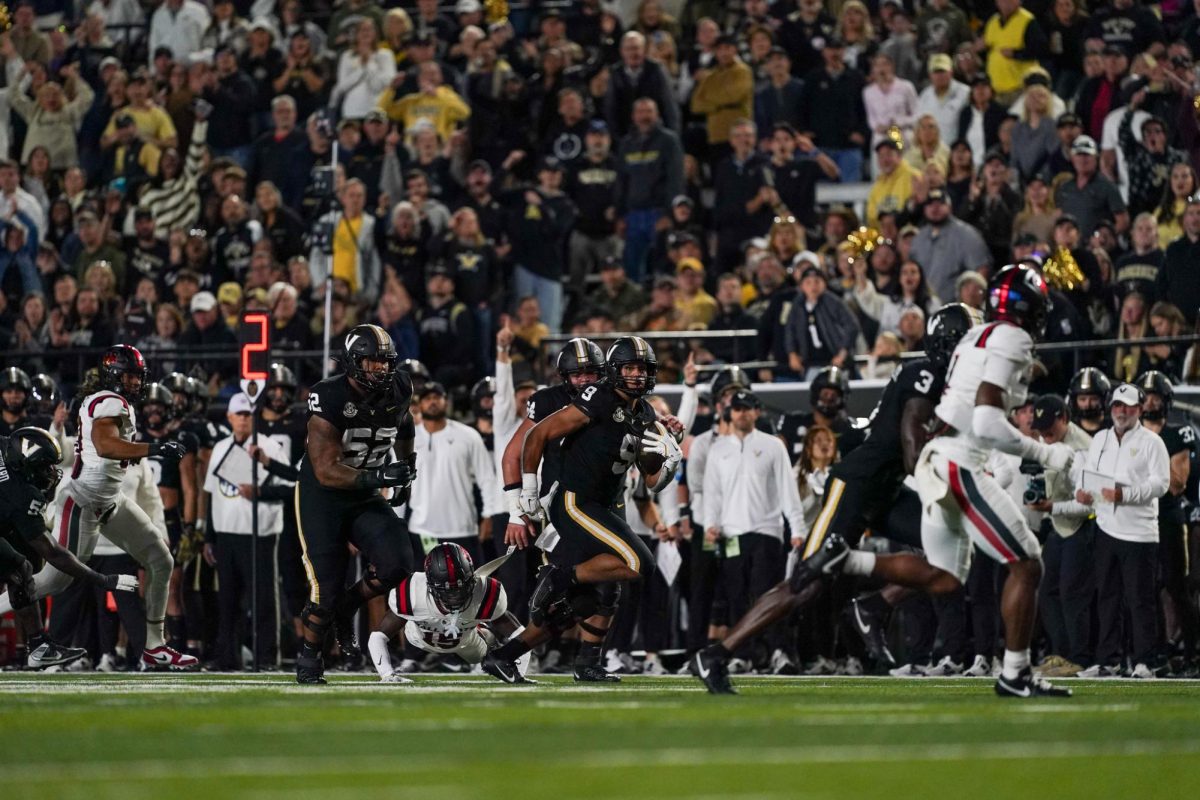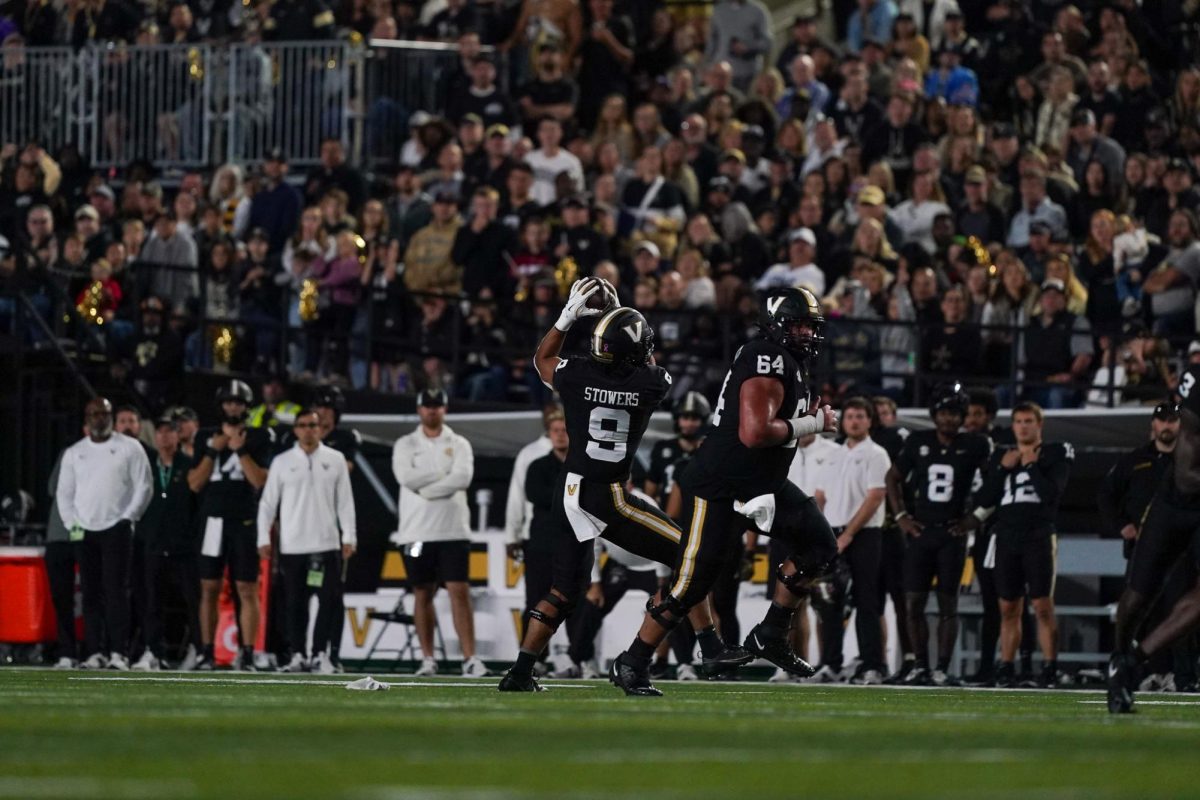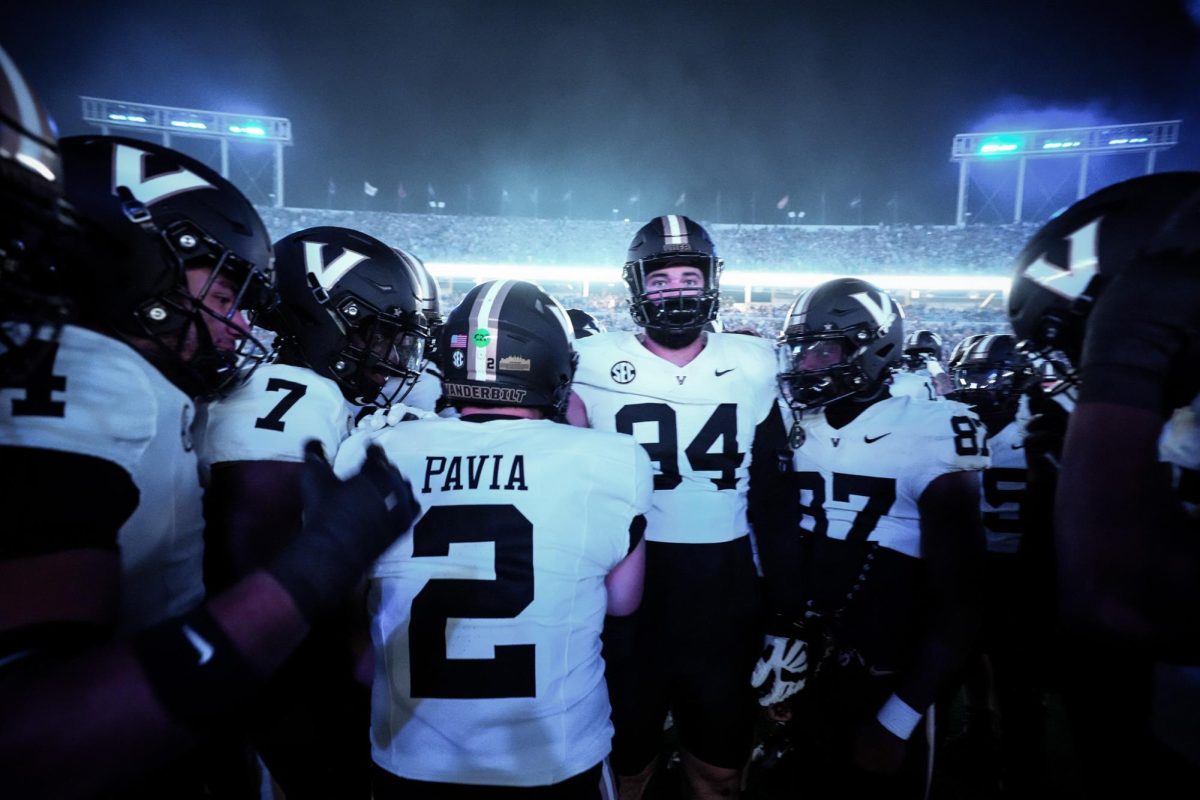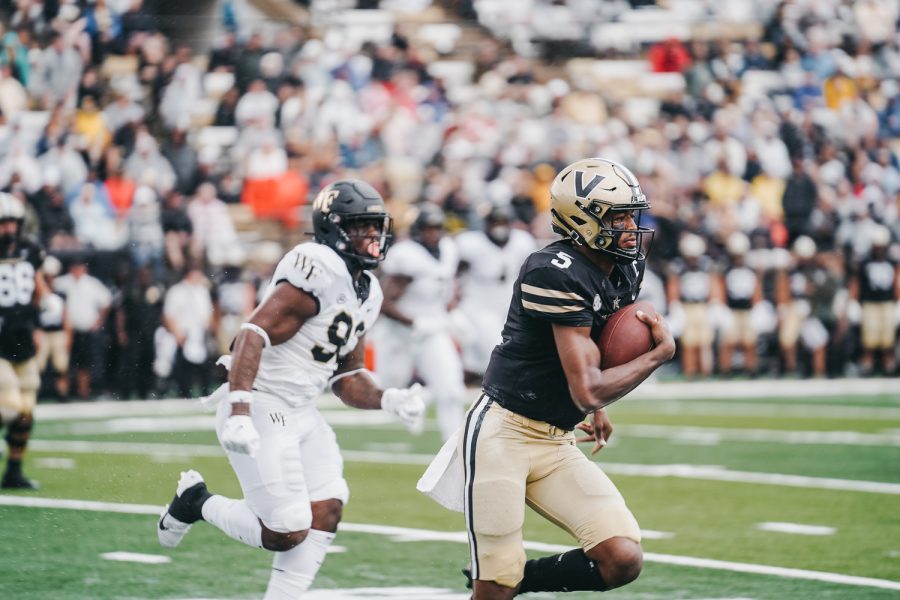The Vanderbilt Commodores are 2-0 for the first time since 2018, and fans have a real cause for optimism for the first time in the Clark Lea era. But before anyone gets too excited, the Commodores will face their first real test of the season against No. 23 Wake Forest on Saturday, Sept. 6. The last time Vanderbilt beat a ranked team was against Missouri in October 2019.
In this week’s edition of film room, we’ll be switching things up and highlighting a unique characteristic of the opposing team, rather than focusing on the Commodores. In this case, unique might be an understatement.
There isn’t a single team in the country that employs the same offensive style as the Wake Forest Demon Deacons. Over the last few seasons Wake Forest’s offense has become notorious for its confounding RPO (run-pass option) system known as the “slow mesh.” Whereas the typical RPO lasts about 1 second from the quarterback’s read to decision, Wake Forest’s average RPO lasts closer to 2.5 seconds. Instead of quickly reading the defense then making a snap decision, Wake’s quarterback begins the handoff process first then reads the defense while holding the ball against the running back’s chest. This delayed convergence, or “mesh,” between quarterback and running back led to the name “slow mesh.”
The slow mesh was a nightmare for unprepared ACC defenses in 2021. The Demon Deacons rolled to a historic 11-win season and finished 4th in the nation in points-per-game. Quarterback Sam Hartman developed into the perfect conductor for the slow mesh system, displaying a profound understanding of the offense in a Heisman-worthy season.
Hartman missed the first game of the 2022 season with a non-football related medical condition that was expected to keep him sidelined for weeks but was surprisingly cleared to play against Vanderbilt. Even without Hartman, the Deacons offense dominated in Week 1, generating 508 yards of total offense in a 44-10 pummeling of the Virginia Military Institute.
Vanderbilt’s head coach Clark Lea discussed the Deacons’ singular offensive style in his press conference on Monday.
“Wake Forest is all about explosive plays and scoring points,” Lea said. “It’s not that their explosive plays only come in the passing game, either. It’s this unique style of holding the ball in the mesh that gives them the opportunity to do that. When you’re reckless with this offense, they end up in the end zone.”
Slow mesh in action
On the first play against Army, most of the defense responds correctly to the fake handoff, but Wake Forest is still able to score a nearly 60-yard touchdown with ease. This is the beauty of the slow mesh. All it takes is one moment of hesitation (whether to defend the run or pass) for a defensive back to blow their assignment, creating an opportunity for Wake Forest’s excellent wide receivers to break free for a huge play.
In the next play against Duke, the reaction isn’t so subtle. The safeties and linebackers read the delayed mesh as a run, which creates a huge opening in the middle of the field for the receivers to create space. The result is another 40+ yard touchdown requiring seemingly no effort.
So if every Wake Forest mesh is a disguise for a deep pass, why don’t teams just play a conservative pass coverage on every down? Despite what Lea says, Wake Forest isn’t all about scoring explosive plays. Another reason the slow mesh is so effective is because it forces defenses to question their most basic instincts.
The run against Florida State shows this perfectly. The safeties drop back into coverage anticipating a pass, which creates a huge cushion for the running back to pick up an easy first down. The same is true on the screen play against Pitt, as the entire Pitt defense ignores the slot receiver for an easy first down.
The mind-bending slowness of the slow mesh offense forces the second level of the defense to blindly guess if a play will be a run or pass. So, if Wake Forest thrives when they slow down the pace of their offense, what happens when a defense forces them to speed things up?
Beating the mesh
Last season, Clemson was the first team to expose the vulnerabilities in Wake Forest’s offense. The key to their victory was circumventing a normally infallible offensive line with creative blitz packages. Just as Wake Forest used the slow mesh to confuse defenses between run and pass coverage, Clemson used disguised defensive schemes to trick the offensive line into thinking they weren’t blitzing. The Tigers benefitted from having one of the most talented pass-rushing groups in the country, but it was their cleverly schemed blitzes during the RPO that won them the game.
On the first play, the outside linebacker surprises his blocker by blitzing through an inside gap on the offensive line. This disruption effectively blows up the play and leads to a sack. On the next play, Wake Forest doesn’t even attempt the slow mesh because they have so little time. #22 on Clemson fakes like he’s blitzing the B gap, then doubles back and slips behind the center to completely catch the quarterback off guard. This play perfectly demonstrates how a defense can fool the quarterback into thinking he has more time to get the throw off.
In the ACC championship game, Pitt utilized a similar strategy to embarrass Wake Forest on the national stage. The Panthers sacked quarterback Sam Hartman five times and had an additional four tackles for loss by infiltrating the RPO. In the selected play, the right-side outside linebacker switched to the left side pre-snap and slips past the guard to wrap up the quarterback. Both teams’ use of creative blitz packages were integral components of a successful gameplan.
Vanderbilt’s pass rush this year
If Vanderbilt wants to slow down Wake Forest’s lethal offense, they will need to emulate Clemson and Pitt by finding creative ways to rush the passer. Fortunately, the team has flashed some unique schemes to get to the quarterback in their first two games this season. While the first play ends in a completion, the delayed blitz on the center’s backside by linebacker Ethan Barr is a sneaky move to rush the passer. On the second play, Vanderbilt sends a linebacker and safety as auxiliary pass rushers to blitz the quarterback. Middle linebacker Anfernee Orji sniffs out a gap in the chaos and forces the quarterback to throw the ball away. Orji will be pivotal to Vanderbilt’s chances of victory against Wake Forest. If he can effectively time his blitzes on Saturday, Vanderbilt will have a much easier time disrupting the RPO.
On the next play, Vanderbilt tricks the Hawaii O-Line by only sending three rushers on the D-Line while cornerback BJ Anderson rushes from the outside. Anderson fires off the edge with lightning quick speed and forces the quarterback out of the pocket before ultimately sacking him.
The next play features another cornerback blitz, this time from slot corner Ja’Dais Richard. Neither Hawaii’s offensive line or quarterback anticipates the blitz from an inside cornerback, which allows Richard to make the sack for a huge loss. Using Vanderbilt’s hyper-athletic defensive backs in blitz packages will be essential to disrupting the RPO, as they can force Hartman out of the pocket before the play develops.
If Vanderbilt uses disguised linebacker blitzes and defensive backs to rush the passer, they will have a chance to contain one of the most unstoppable offensive units in the country. But if the Commodores can’t get to the quarterback, Vanderbilt fans could be in for a long afternoon at FirstBank Stadium.
Vanderbilt will host Wake Forest this Saturday, Sept. 10 at 11 a.m. CDT.

